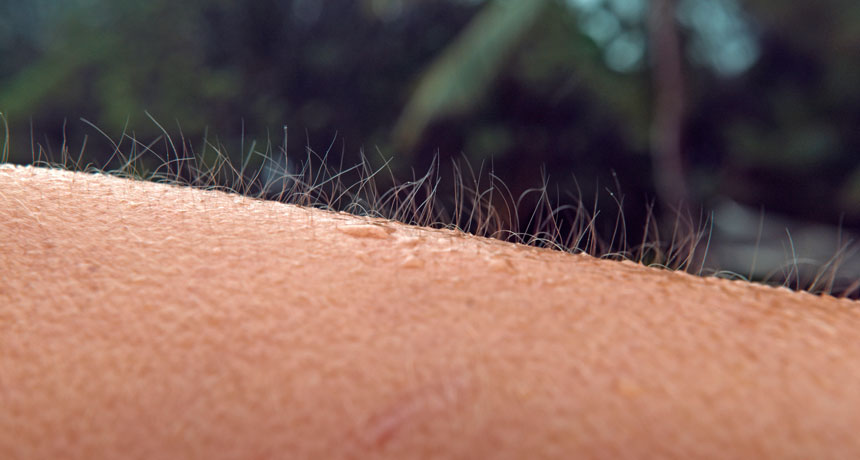Getting goose bumps could boost hair growth

SAN DIEGO — Getting goose bumps doesn’t just make hairs stand on end; it may also help hair grow.
Nerves and muscles that raise goose bumps also stimulate stem cells in the skin to make hair follicles and grow hair. Ya-Chieh Hsu, a stem cell researcher at Harvard University, reported the unpublished findings December 9 at the joint meeting of the American Society for Cell Biology and the European Molecular Biology Organization. Getting goose bumps when it’s cold may encourage animals’ fur to grow thicker, Hsu said.
Nerves that are part of the sympathetic nervous system — which controls pupil dilation, heart rate and other automatic processes — nestle next to stem cells that will create hair follicles, Hsu and her colleagues found. Usually nerves are wrapped in a protective coating called myelin, like electrical wire sheathed in plastic. But Hsu’s group found that the nerves’ ends were naked where they meet hair follicle stem cells, like wires stripped at the tips to make contacts with electrical nodes.
The nerves secrete the hormone norepinephrine. That hormone is necessary for hair growth, the researchers found. Those findings might help explain why hair loss is a side effect of drugs known as beta-blockers, which interfere with norepinephrine’s action.
Sympathetic nerves next to hair follicles are also wrapped around tiny arrector pili muscles, which contract to make hair cells stand on end, causing goose bumps. Mice with mutations that prevented the muscles from growing also lacked the sympathetic nerves and didn’t grow hair normally. Men with male pattern baldness also lack arrector pili muscles in their scalps, Hsu said, suggesting that sympathetic nerves and goose bump–raising muscles may also be important in that type of baldness. Restoring the nerves and muscles may lead to new hair growth, she said.